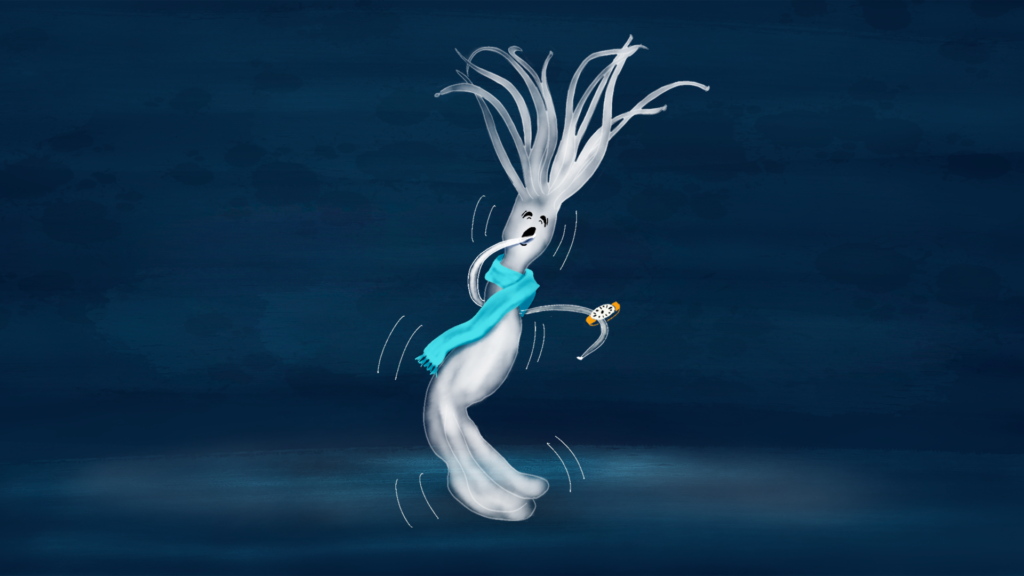These anemones are nocturnal and are known to get their wiggle on when it’s dark. But what happens when temperature—not light—changes over the course of a full day spent in the muck? Does their 24-hour rhythm get disrupted? And how do temperature changes affect their physiology over daily or tidal periods?
These are some of the questions that keep Cory Berger, an MIT-WHOI Joint Program student, up at night.
“No one has looked at this before,” says Berger, who works with populations of Nematostella originally collected from Great Sippewissett Marsh, a large tidal salt marsh that sits behind two barrier beaches along Buzzards Bay, Massachusetts. “One of the reasons we care about this species is because it’s in the Cnidaria phylum—the same group of animals as corals—and we know very little about the influence of temperature on coral circadian cycles. Nematostella is a model we can use to learn more about animals like corals that are harder to keep in the lab.”
Berger says another reason cnidarians are interesting is because they don’t have brains. “We humans have a centralized clock in our brains that helps orchestrate the rest of our tissues, but we don’t really know how a more ‘primitive’ decentralized clock works, or where it might be located physically.”
Ann Tarrant, an associate scientist at WHOI and Berger’s adviser, says it’s also important to understand how animals use cues such as light and temperature to prepare for changes in the environment. “We’re interested in how Nematostella detect these cues, and which ones are most reliable and helpful,” she says.
To find out how the anemones respond to different temperature regimes, Berger and Tarrant placed them onto petri dishes in groups of six and filmed them over 72-hour periods in the dark using an infrared camera.
“In order to isolate the effects of temperature, we needed to remove the variable of light entirely given its influence on their body clocks,” says Berger.
During the filming, temperatures were shifted between 10 and 30 degrees C over a 24-hour period—a similar temperature regime to what the anemones can experience in daily life at the marsh. After running more than a dozen animals through the experiment, a clear trend became apparent: temperature does affect their circadian rhythms.
“The animals respond to temperature in a rhythmic way in much the same way as they do light, where they move less when the temperature increases, and move more when it drops,” says Berger.
So, what would happen if light was added back into the equation along with temperature?
“If light and temperature line up as they do in nature, we expect the animals would have the same strong nocturnal behavior they’re known to have,” says Berger. “But if light and temperature are out of sync—for example, if it’s warm during the dark phase and cold during the light phase—the animals might be disrupted. It would be like an extreme case of jet lag, and they’d likely lose their rhythmic behavior.”
As a next step, Berger will attempt to measure the expression of genes involved in the anemones’ ability to sense both light and temperature. He says that very little is known about the role of different genes in the anemone clock.
“By understanding the genes involved in light and temperature sensing in anemones, we can learn more about how corals process environmental information, which can influence a range of things like the timing of their reproduction,” he says.
Original post https://alertarticles.info



